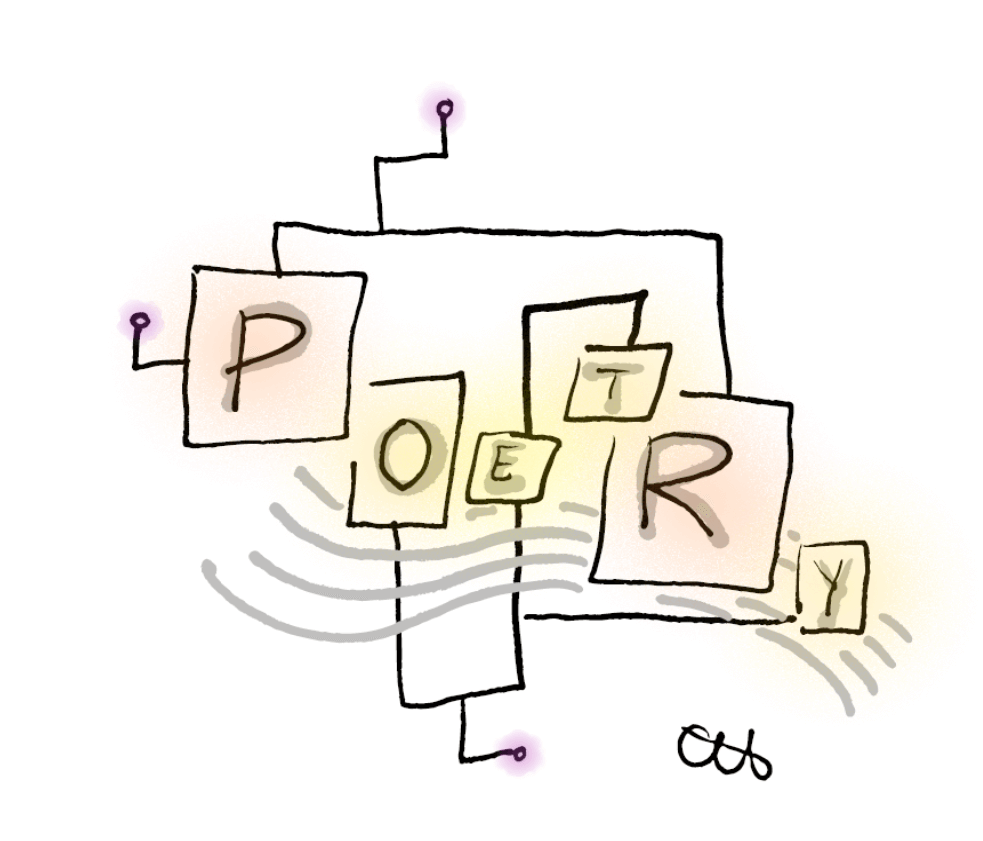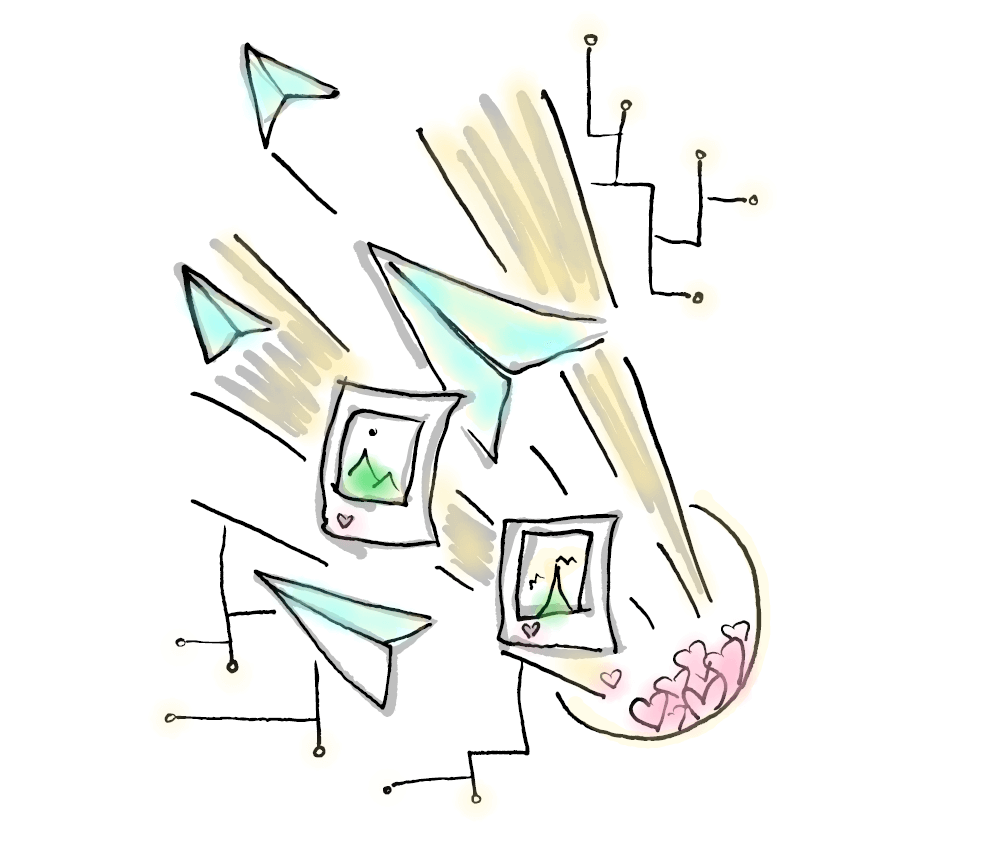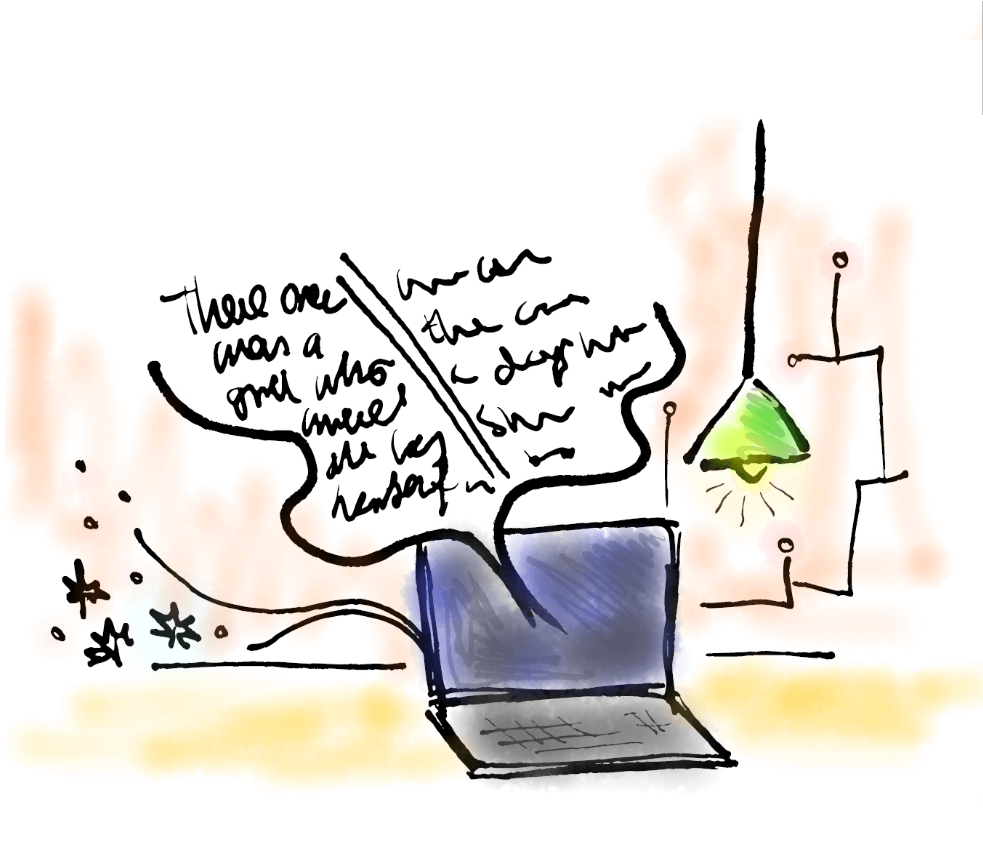
Book Review: Poetry Unbound
In reviewing Mike Chasar’s Poetry Unbound (Columbia University Press, 2020), it is first necessary to ask how does this book, in many ways, represent the start of a novel project concerning social media and popular culture? It is neither about social media and pop culture in particular, nor the digital and cultural expressions in general. It is a book about poetry.
By that same token, Poetry Unbound is not really just about poetry. Rather, it uses poetry as an exemplar to show how media technologies shape and are, in turn, shaped by cultural artifacts and expressions. Chasar proposes the concept of being “bound and unbound.” A cultural expression or artifact is bound when it is inscribed onto material-discursive media-technologies and becomes part of the connected infrastructures, such as the codex as a technology and the infrastructures of the book industry. The more easily it can work as a transmedial object, the more unbound it is.
Bindings are historically, materially, and discursively created. This is what Mike Chasar succeeds in showing us throughout Poetry Unbound. On a meta-level, it succeeds in unbinding poetry from the printed text and the codex for the reader, which opens up the possibility to think about how poetry exists outside of these particular bindings. As Chaser writes in the introduction, “we must immerse ourselves in poetry’s various media instantiations in order to understand its range of possible meanings and effects” (11). Poetry has always existed in multiple material forms.
This unbinding from what makes up established structures is perhaps even more important in our contemporary age of digital infrastructures and networked culture. As Manovich explains, what makes new media new is how easily something can change and move about because it exists of the same materiality entirely: zeroes and ones. Remediation, intermediality, and transmediality—as examples of concepts explaining mediated travels of artifacts—are all part of the complex cultural assemblage of our age. While this has recently become evident for many forms of cultural expression, for poetry, however, this has always been so—even if it has gone through epochs of being perhaps unnecessarily bound to print and codices. Poetry does not have to be in a book and it does not have to be printed, for that matter. But what happens when it is not printed? How do we reckon with cultural artifacts and expressions specifically created for being transmedial?
Focusing on the twentieth century, Chasar provides several examples of poetry binding itself—or being bound—to different forms. He shows how poetry inscribes itself onto different material-discursive technologies with various imagined affordances, finding parallels between aspects of earlier modes of binding and instapoetry today. The introduction starts with the story of Harriet Monroe in 1891 and “The Columbian Ode,” a poem that had great difficulty being bound into a specific print edition. The first chapter then goes on to discuss the popularity of magic lanterns, a screen media for reading poetry popular in the early twentieth century that is almost forgotten today. Magic lanterns also represented a new way people had to and became accustomed to reading during a time when poetry was “[n]ot tied in the cultural imagination or social experience to any single or primary media form or set of media experiences or protocols” (34).

Chapter two focuses on “The Murder of Lidice” by Edna St. Vincent Millay and how it too traveled from medium to medium, across time and space, producing different types of responses. The example also shows how similar the distribution of poetry was then compared to now, by applying the same transmedial logics, we today find in contemporary marketing campaigns today. Here, Chasar asks us to reflect on how we relate to cultural artifacts and how this is affected by the mediation of the material-discursive inscription. This is perhaps the most important chapter of the book, which also makes it a recurring point to appear in the last chapter of the book as well.
Chapter three similarly follows suit with another nearly forgotten binding: poetry with moving pictures. While we think of movies today as a separate and unique form of artistic expression and work of art or of novels that have been adapted into movies, Chasar argues that, in the beginning, it was all about adapting poems into films. Chapters four and five continue the theme of cinema and movies, focusing on how poetry is mediated when it functions as a part of the stories told in movies, and how these depictions demonstrate poetry’s relations to orality and print. Moreover, Chasar deals with the depictions of the poet persona on popular TV-shows, and the poetry that makes them be seen and recognized as poets. In other words, he reflects on the idea of what poetry is, how it is produced, and how it should be understood. That is, poetry should be seen as a reflection of the cultural imagination and as a force in shaping the cultural imagination.
The last chapter deals with contemporary popular bindings of poetry. That of poetry to social media, for instance, especially instapoetry and its resemblance to the circulation and consumption of poems such as Millay’s mentioned earlier. Chaser’s point is that instapoetry is an example of the same unbounded-ness that poetry had in 1942 at the time of “The Murder of Lidice,” when poetry was a multimedia-friendly genre. While finding similarities, he also focuses on the specificities of the instapoetry phenomenon. Echoing the book’s main idea—that of poetry being shaped by and, in turn, shaping what it binds with or entangles with—the cliché in many of these poems is deemed to be the result of an aesthetic affected by the digital web-based social media environment. This is the same effect that makes the same poetry feel so authentic to other readers. The conclusion provides a refreshing perspective on how we should approach instapoetry, which is one of the biggest cultural phenomena to have emerged over the past decade.
Chaser warns that if we do not focus on poetry and its bindings with other media than the current or traditional hegemony, then we risk not understanding it. “We risk missing how that media landscape has in turn shaped poetry, both as an expressive form and as an idea in the larger culture,” he continues (24). The same could be said for cultural products at large and that is why this book is such a strong example of how we should think beyond materiality, but at the same time with materiality to understand cultural production and the products, artifacts, and expressions we create and consume.
The main argument running throughout the book is that it is not just about the book (or the codex); it is not the starting point or the endpoint. It is not about print versus screen either. We can take this view with us when we look at today’s culture of increased transmediation.
But if it is not just about the book, it is not just about moving pictures, cinema, or movies either, which is a weakness in Poetry Unbound. Chaser favors audiovisual examples including different bindings of poetry to audiovisual mediations, especially film. Focusing on that part of poetry’s bindings, however, strengthens the overarching argument that bindings to audiovisual technologies differ dramatically depending on historical and cultural contexts. Ending with a focus on the visual social media Instagram, the book creates a perfect circle, where we in many ways, return to the same screen of the magic lantern that only now is an app on our phones. But as he writes in the afterword, many different paths from hip-hop to video games could have been explored. He urges readers to “account more fully for how changes in mass communication have affected and are affecting poetry” (197). An argument that can be made for any cultural artifact or expression now entangled in the social media ecology of today.
For those stuck in the dichotomy of print and screen, or the dichotomy of analog and digital, this book is for you. It is an argument that looks beyond these dichotomies, into what binds and frees, of what something is (unbound) when it is not limited to one type of inscription. Music, for instance, was once bound to concerts and CDs, but now Spotify is the hegemony and CDs have almost disappeared. But, music has also been and is so much more. So are video games, photography, theatre, visual art, and literature. While some are easily bound to certain types of inscriptions, others bind and unbind or are at times not specifically bound to anything, yet not unbound either — they are transmediated. This, Chasar insists, we must not forget.
 In reviewing Mike Chasar’s Poetry Unbound (Columbia University Press, 2020), it is first necessary to ask how does this book, in many ways, represent the start of a novel project concerning social media and popular culture? It is neither about social media and pop culture in particular, nor the digital and cultural expressions in general. It is a book about poetry.
In reviewing Mike Chasar’s Poetry Unbound (Columbia University Press, 2020), it is first necessary to ask how does this book, in many ways, represent the start of a novel project concerning social media and popular culture? It is neither about social media and pop culture in particular, nor the digital and cultural expressions in general. It is a book about poetry.
By that same token, Poetry Unbound is not really just about poetry. Rather, it uses poetry as an exemplar to show how media technologies shape and are, in turn, shaped by cultural artifacts and expressions. Chasar proposes the concept of being “bound and unbound.” A cultural expression or artifact is bound when it is inscribed onto material-discursive media-technologies and becomes part of the connected infrastructures, such as the codex as a technology and the infrastructures of the book industry. The more easily it can work as a transmedial object, the more unbound it is.
Bindings are historically, materially, and discursively created. This is what Mike Chasar succeeds in showing us throughout Poetry Unbound. On a meta-level, it succeeds in unbinding poetry from the printed text and the codex for the reader, which opens up the possibility to think about how poetry exists outside of these particular bindings. As Chaser writes in the introduction, “we must immerse ourselves in poetry’s various media instantiations in order to understand its range of possible meanings and effects” (11). Poetry has always existed in multiple material forms.
This unbinding from what makes up established structures is perhaps even more important in our contemporary age of digital infrastructures and networked culture. As Manovich explains, what makes new media new is how easily something can change and move about because it exists of the same materiality entirely: zeroes and ones. Remediation, intermediality, and transmediality—as examples of concepts explaining mediated travels of artifacts—are all part of the complex cultural assemblage of our age. While this has recently become evident for many forms of cultural expression, for poetry, however, this has always been so—even if it has gone through epochs of being perhaps unnecessarily bound to print and codices. Poetry does not have to be in a book and it does not have to be printed, for that matter. But what happens when it is not printed? How do we reckon with cultural artifacts and expressions specifically created for being transmedial?
Focusing on the twentieth century, Chasar provides several examples of poetry binding itself—or being bound—to different forms. He shows how poetry inscribes itself onto different material-discursive technologies with various imagined affordances, finding parallels between aspects of earlier modes of binding and instapoetry today. The introduction starts with the story of Harriet Monroe in 1891 and “The Columbian Ode,” a poem that had great difficulty being bound into a specific print edition. The first chapter then goes on to discuss the popularity of magic lanterns, a screen media for reading poetry popular in the early twentieth century that is almost forgotten today. Magic lanterns also represented a new way people had to and became accustomed to reading during a time when poetry was “[n]ot tied in the cultural imagination or social experience to any single or primary media form or set of media experiences or protocols” (34).

Chapter two focuses on “The Murder of Lidice” by Edna St. Vincent Millay and how it too traveled from medium to medium, across time and space, producing different types of responses. The example also shows how similar the distribution of poetry was then compared to now, by applying the same transmedial logics, we today find in contemporary marketing campaigns today. Here, Chasar asks us to reflect on how we relate to cultural artifacts and how this is affected by the mediation of the material-discursive inscription. This is perhaps the most important chapter of the book, which also makes it a recurring point to appear in the last chapter of the book as well.
Chapter three similarly follows suit with another nearly forgotten binding: poetry with moving pictures. While we think of movies today as a separate and unique form of artistic expression and work of art or of novels that have been adapted into movies, Chasar argues that, in the beginning, it was all about adapting poems into films. Chapters four and five continue the theme of cinema and movies, focusing on how poetry is mediated when it functions as a part of the stories told in movies, and how these depictions demonstrate poetry’s relations to orality and print. Moreover, Chasar deals with the depictions of the poet persona on popular TV-shows, and the poetry that makes them be seen and recognized as poets. In other words, he reflects on the idea of what poetry is, how it is produced, and how it should be understood. That is, poetry should be seen as a reflection of the cultural imagination and as a force in shaping the cultural imagination.
The last chapter deals with contemporary popular bindings of poetry. That of poetry to social media, for instance, especially instapoetry and its resemblance to the circulation and consumption of poems such as Millay’s mentioned earlier. Chaser’s point is that instapoetry is an example of the same unbounded-ness that poetry had in 1942 at the time of “The Murder of Lidice,” when poetry was a multimedia-friendly genre. While finding similarities, he also focuses on the specificities of the instapoetry phenomenon. Echoing the book’s main idea—that of poetry being shaped by and, in turn, shaping what it binds with or entangles with—the cliché in many of these poems is deemed to be the result of an aesthetic affected by the digital web-based social media environment. This is the same effect that makes the same poetry feel so authentic to other readers. The conclusion provides a refreshing perspective on how we should approach instapoetry, which is one of the biggest cultural phenomena to have emerged over the past decade.
Chaser warns that if we do not focus on poetry and its bindings with other media than the current or traditional hegemony, then we risk not understanding it. “We risk missing how that media landscape has in turn shaped poetry, both as an expressive form and as an idea in the larger culture,” he continues (24). The same could be said for cultural products at large and that is why this book is such a strong example of how we should think beyond materiality, but at the same time with materiality to understand cultural production and the products, artifacts, and expressions we create and consume.
The main argument running throughout the book is that it is not just about the book (or the codex); it is not the starting point or the endpoint. It is not about print versus screen either. We can take this view with us when we look at today’s culture of increased transmediation.
But if it is not just about the book, it is not just about moving pictures, cinema, or movies either, which is a weakness in Poetry Unbound. Chaser favors audiovisual examples including different bindings of poetry to audiovisual mediations, especially film. Focusing on that part of poetry’s bindings, however, strengthens the overarching argument that bindings to audiovisual technologies differ dramatically depending on historical and cultural contexts. Ending with a focus on the visual social media Instagram, the book creates a perfect circle, where we in many ways, return to the same screen of the magic lantern that only now is an app on our phones. But as he writes in the afterword, many different paths from hip-hop to video games could have been explored. He urges readers to “account more fully for how changes in mass communication have affected and are affecting poetry” (197). An argument that can be made for any cultural artifact or expression now entangled in the social media ecology of today.
For those stuck in the dichotomy of print and screen, or the dichotomy of analog and digital, this book is for you. It is an argument that looks beyond these dichotomies, into what binds and frees, of what something is (unbound) when it is not limited to one type of inscription. Music, for instance, was once bound to concerts and CDs, but now Spotify is the hegemony and CDs have almost disappeared. But, music has also been and is so much more. So are video games, photography, theatre, visual art, and literature. While some are easily bound to certain types of inscriptions, others bind and unbind or are at times not specifically bound to anything, yet not unbound either — they are transmediated. This, Chasar insists, we must not forget.



